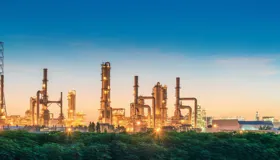Australia's green bank CEFC draws 'crowding in' capital to hit energy goals

This article originally appeared in AsianInvestor and is republished with permission.
6 October 2025
By Peter Brieger
Clean Energy Finance Corporation (CEFC) is ramping up renewable energy investment as the country targets a 2050 net zero goal.
A landmark agricultural platform deal between Clean Energy Finance Corporation (CEFC) and Canadian pension fund La Caisse underscores how Australia is leaning on government policy and global capital to drive renewable investment, says Monique Miller, CEFC’s CIO for renewables and sustainable finance.
Announced last month, the A$250 million ($165 million) agreement, designed to generate high-quality Australian Carbon Credit Units(ACCUs), will see miner Rio Tinto join as a foundation offtaker.
“[The deal] is a great example of ‘crowding in’ capital,” Miller told AsianInvestor. “Australia is leveraging a combination of government policies and its strong financial markets to attract global capital into renewable investment.
“This environment, coupled with Australia's abundance of high-quality renewable resources like solar and wind, helps to make clean energy projects a compelling proposition for domestic and international financiers.”
CEFC, Australia’s government-backed green bank, is coming off a 2024-25 financial year when it deployed a record A$2.9 billion to accelerate the nation's push toward its 82% renewable generation target by 2030.
Last year’s record deployment has helped push CEFC to A$25.7 billion in clean energy project value, as Australia increasingly vies for renewable investment capital globally.
In a recent report, the green bank said that for every dollar it committed, CEFC attracted an additional $4.14 from private investors.
The Trump administration’s withdrawal from the Paris agreement during his first term, and more recent roll backs on green energy investment have opened a door for Australia, according to some observers.
“Major international policy changes are causing a reallocation of debt and equity capital and are changing supply chains for key materials and labour around the world. This can both create opportunities and challenges for Australia,” Miller said.
The increased global scrutiny on climate risks, driven by international policy, can attract institutional investors to Australia who are increasingly integrating climate considerations into their investment decisions.Monique MillerCEFC Chief Investment Officer – Renewables and Sustainable Finance
Earlier this year, Dutch pension fund APG announced a A$1 billion investment in Octopus Australia's renewable energy platform, one of the largest institutional investments in Australia's renewable sector. The project is targeting to add over 2GW of renewable capacity --enough to power 1.6 million homes -- in the next five years while avoiding more than 3 million tons of CO₂ annually.
Apart from its role big-ticket deals, CEFC is moving to make clean energy technology more accessible for all Australians and small businesses, Miller said, pointing to access for financing discounts for home improvements like solar panels and batteries and backing electric vehicle uptake.
Australia’s National Renewable Energy Priority List, released by the government in March, identified 56 critical projects – across energy transmission, generation and storage -- that could deliver an additional 16 GW of generation and 6 GW of storage capacity by the end of 2031.
“The CEFC’s work on energy decarbonisation, which includes investments in large-scale solar and wind, energy storage, and transmission infrastructure, supports the national clean energy agenda,” Miller said.
“By ‘crowding in’ private capital and addressing market gaps, the CEFC helps unlock large-scale projects and accelerate the transition to a cleaner, more reliable energy grid.”
Despite strong uptake in solar and wind energy by global standards, Australia still faces challenges ahead, including grid upgrades.
“The development of new transmission lines and other grid upgrades is essential to connect renewable energy zones to demand centres, involving a lot of different bodies across several jurisdictions and locations, can be complex, but they are of critical importance,” Miller said.
BloombergNEF analysis, cited in the CEFC’s recent report, showed that the nation must increase its current investment levels 2.6 times to reach net zero by 2050.
“The global economy is grappling with persistent inflation and high interest rates, which can challenge investment in long-life, high-upfront-cost assets,” Miller said.
“Other significant challenges include supply chain vulnerabilities, as the industry is heavily reliant on a few key regions for critical minerals and manufactured components. While policy and technological innovation are tackling these issues, ongoing coordinated global efforts will help overcome these economic and geopolitical hurdles and accelerate the transition.”
Haymarket Media Limited. All rights reserved.




